Live plants can be an enriching addition to your leopard geckos habitat. But you need to make sure you choose plants that are safe.
Best Live Plants for Leopard Geckos:
- Aloes
- Mexican Spice Basil
- Air Plants (Tillandsia)
- Elephant Bush
- Snake Plants
- Christmas Cactus
- Sedge grass
- Jade Plant
- Echeveria
- Sweetheart Wax Plants (Hoya Kerii)
- Zebra Cactus
- String of Pearls
See full descriptions, including why the plants are so good and how to set them up properly below.
11 Plants That are Safe for Leopard Geckos
1. Aloes
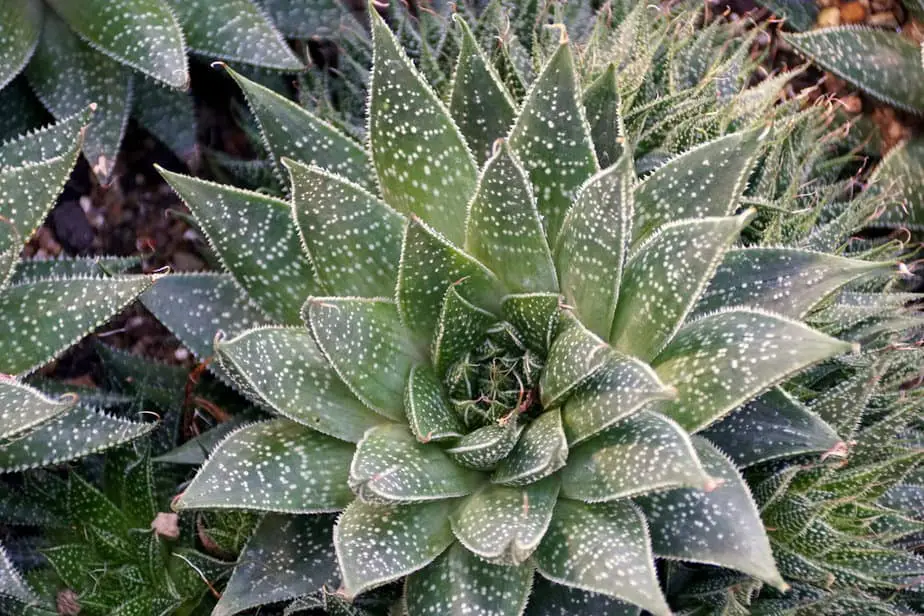
Aloes are one of the most popular plant species for leopard gecko tanks. These plants come in hundreds of species, with some being greener than others.
While most of them grow slowly, some can grow quickly and even become taller than your tank. As such, it’s important to choose the species of aloe you want in your gecko’s tank wisely and keep an eye on the plant as it grows.
If you notice any small plants growing from the original, don’t hesitate to remove them and grow them elsewhere.
Some popular aloe species for leopard gecko tanks include:
- Lace aloe
- Sunset aloe
- Golden tooth aloe
- Tiger tooth aloe
- Short-leaved aloe
- Somalian aloe
Whichever species you go for, the plant will need 6 to 8 hours of sunlight every day and a maximum temperature of 85 degrees Fahrenheit.
Fortunately, these plants usually only need to be watered once a month.
2. Mexican spice basil
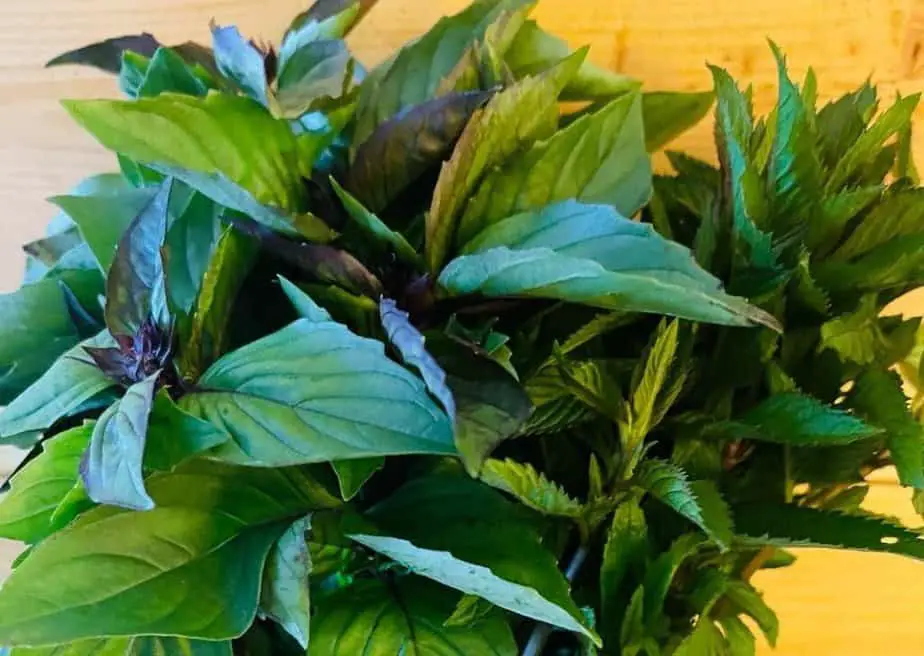
Also known as cinnamon basil, this is a herb that produces a great scent and can create a conducive environment for your leopard gecko.
However, it doesn’t do well with substrates that have to be changed regularly. As such, it’s only good for bioactive tanks.
3. Elephant bush
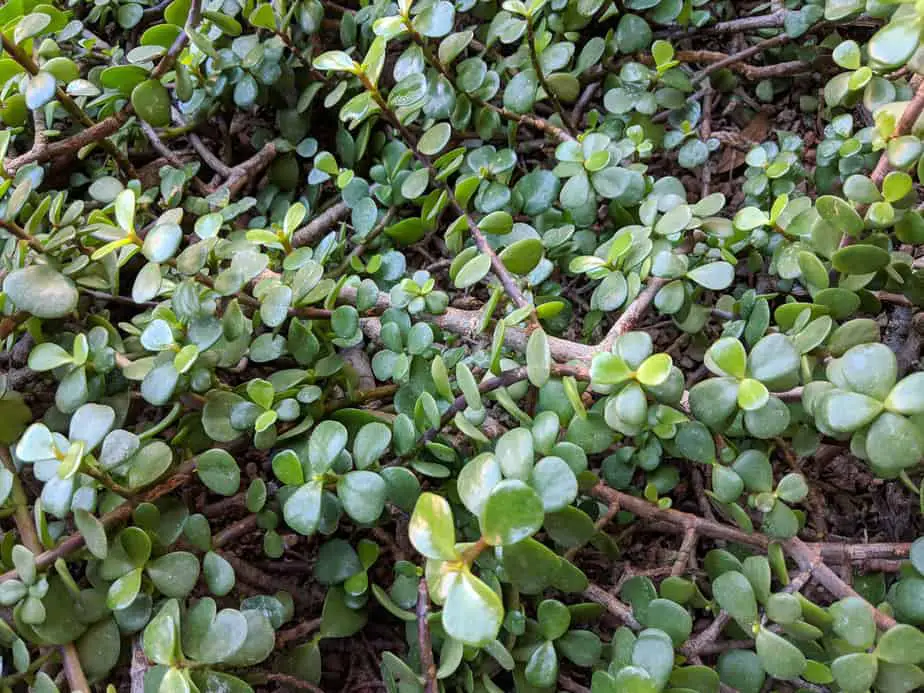
This succulent gets its name from the fact that elephants like eating it. It is also known as spekboom, pork bush, or Portulacaria afra.
It has a reddish-brown stem and green leaves. If there’s one thing you need to know about elephant bushes, it’s that they can get tall – up to 16 feet tall.
However, you can easily deal with this issue by trimming them. After all, you can easily make bonsai from them.
Elephant bushes are easy to maintain. You only need to water them once or twice a month and they can even tolerate high temperatures of up to 110 degrees Fahrenheit.
4. Snake plants
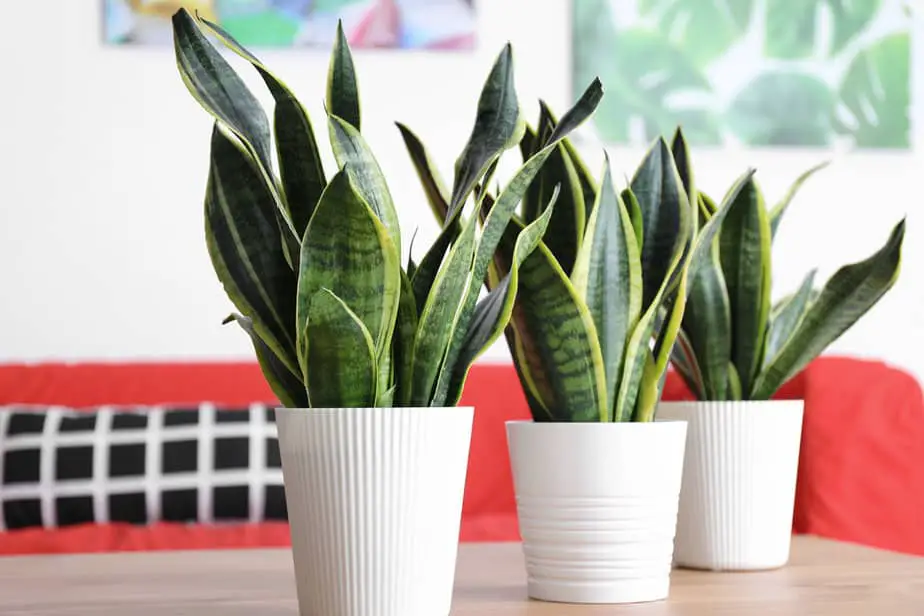
Another favorite among leopard gecko owners is the snake plant, or as others call it, the mother-in-law plant.
This is truly one of the sturdiest plants out there. It only requires a little water here and there – watering it every 2 to 3 weeks is more than enough.
Beyond that, it can withstand temperatures of up to 80 degrees Fahrenheit. This means it can thrive well in the cool side of your leopard gecko’s tank.
Since snake plants can grow significantly tall, they are great for tall tanks.
They particularly look good when placed at the back of the tank. Since they are usually bright green, they can give the tank a jungle-like appearance that many like.
Snake plants can also remove toxic chemicals from the air.
In this way, they act like natural air purifiers. Two species of snake plants that you should consider getting for your leopard gecko tank are:
- Sansevieria Golden Hahnii – these plants have short leaves that have yellow borders
- Sansevieria desertii – these plants have red tinted leaves and are sometimes referred to as rhino grass
5. Air Plants (Tillandsia)
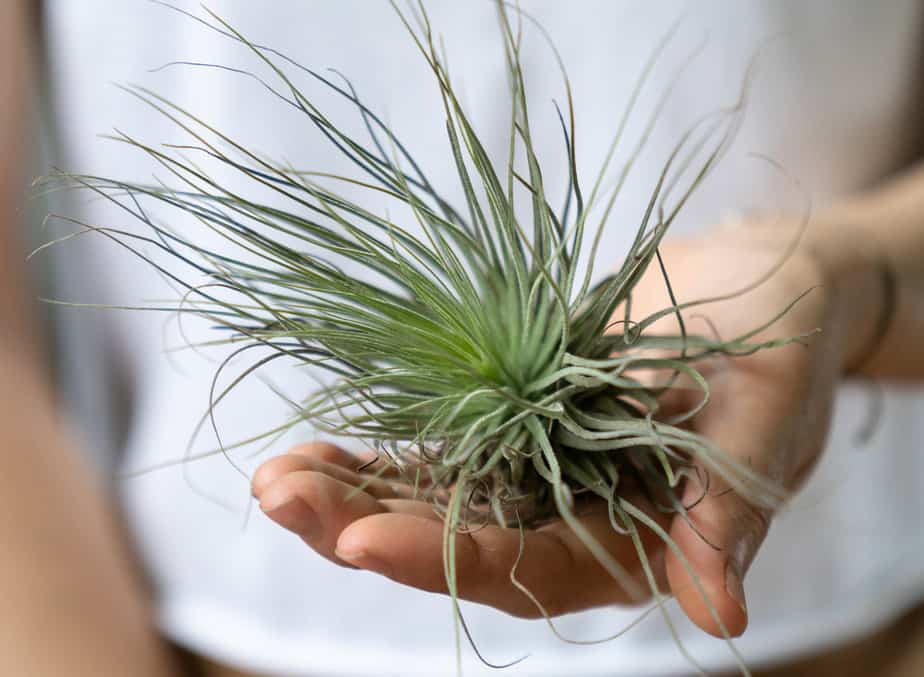
These plants are also known as air plants. As their name suggests, they depend on the air for their nutrition rather than soil or substrate. These plants grow while clinging to rocks, plants, and other objects.
Interestingly, there are over 650 species of air plants. You can even mix up different species in your leopard gecko’s tank. After all, they are all pretty low maintenance.
They can withstand temperatures of up to 90 degrees Fahrenheit. This means they can easily thrive in the warm side of your leopard gecko tank.
You only need to water these plants once every three weeks.
However, air plants aren’t watered like other plants. You will have to soak them in water for two hours instead. It’s also advisable to mist them every two days.
6. Christmas/Easter/Holiday cactus
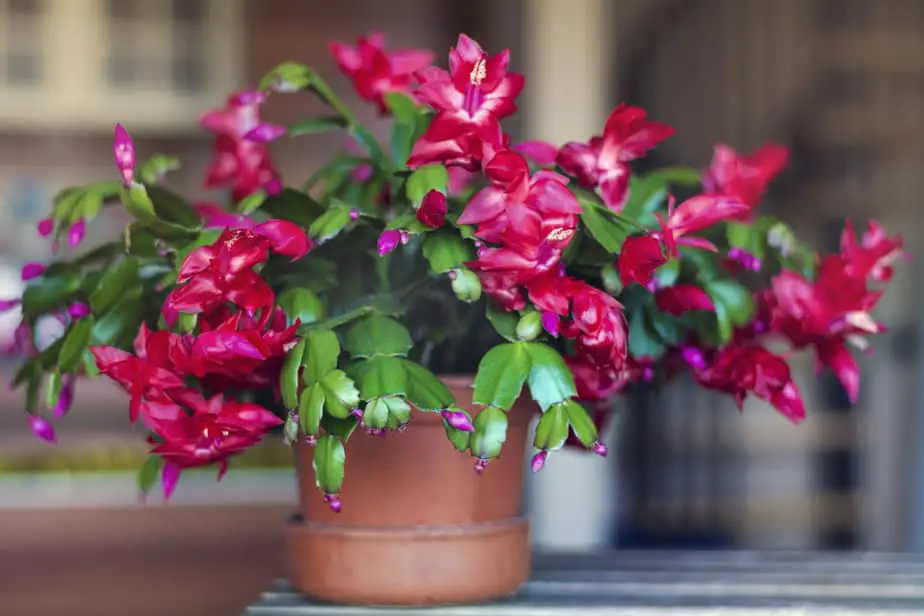
This type of cactus doesn’t have spines. Instead, it has smooth green leaves and pink, red, or white flowers. While the Christmas cactus usually has white flowers, the Easter one usually has red flowers.
Whatever the case, this cactus thrives best in the cool side of a leopard gecko tank, even though it can withstand temperatures of up to 100 degrees Fahrenheit.
It’s easy to propagate. All you need to do is cut a piece of the leaves of this cactus and plant it.
7. Carex/Sedge grass
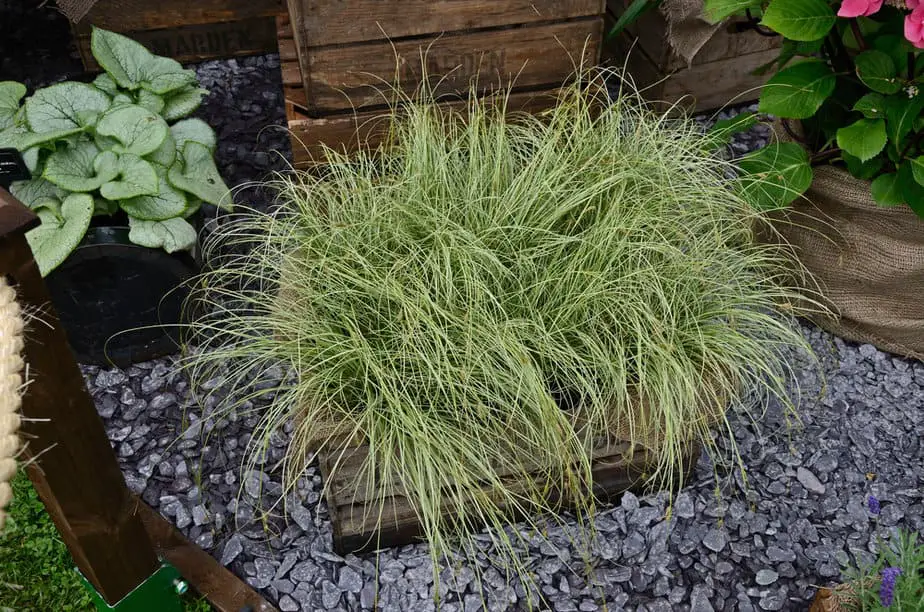
This plant is bright green and grows up to 6 to 30 inches high. It’s evergreen, grassy, and looks a lot like the grasslands that wild leopard geckos live in.
Since sedge grass comes in over 100 species, it is available in various textures and even shades of green. So you have a lot of freedom to choose what works for you and even mix different looks and textures.
We must warn you, though – small species of sedge grass are more suitable for leopard gecko tanks than large ones.
Whichever you go for, ensure that it’s from an arid region. Such species will thrive best in your leopard gecko’s tank temperature and humidity conditions.
If you water them once a week, they will serve you and your reptile for years to come.
8. Jade plant

Commonly referred to as the money plant, the jade plant is native to South Africa. While it looks like an elephant bush plant, it can only grow to 3 feet. And even then, you can still keep it shorter by regularly trimming it.
If there’s one thing that the jade plant is known for, it’s the fact that it can live for long and even be passed from generation to generation.
A part of the reason that this plant can live for long is the fact that it’s easy to maintain.
You just need to water it every two to three weeks, ensure it gets UV light and keep it at temperatures below 75 degrees Fahrenheit.
9. Echeveria
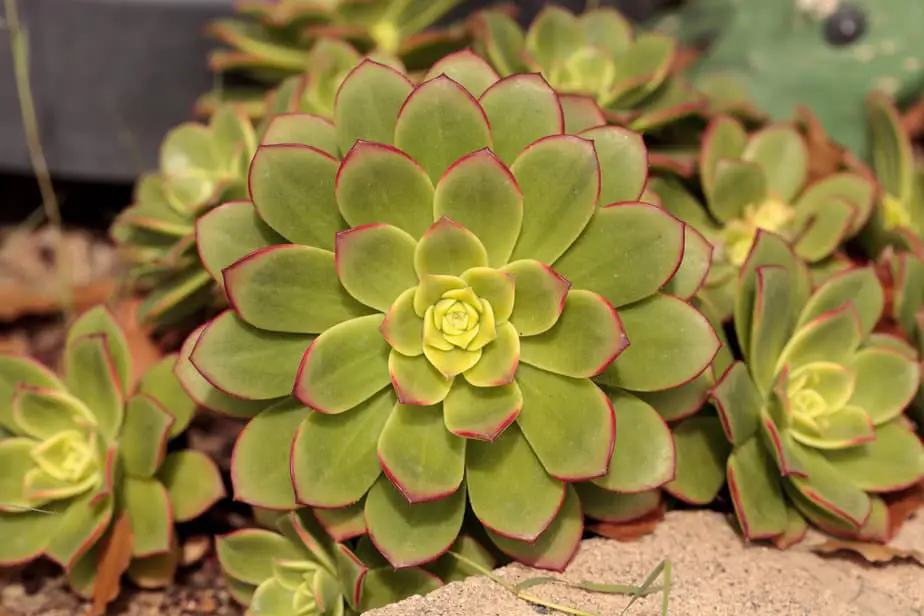
These succulents are known for their short stature, and the cute rosette shapes the form of their leaves. They come in various colors, including pink, green, blue, and purple.
Interestingly, the leaves can even have a different contrasting color along their edges. Whatever color your echeveria plant leaves have, they will still be thick and have cuticles on their surfaces.
Also, you’ll still need to water them once or twice every month and provide them with UV light.
Beyond that, you need to ensure that your echeveria plants aren’t exposed to temperatures higher than 95 degrees Fahrenheit.
You’ll also need to keep an eye on your plant’s growth. This is because some of these plants easily spread and can take over your leopard gecko’s tank.
10. String of pearls (Senecio Rowleyanus)
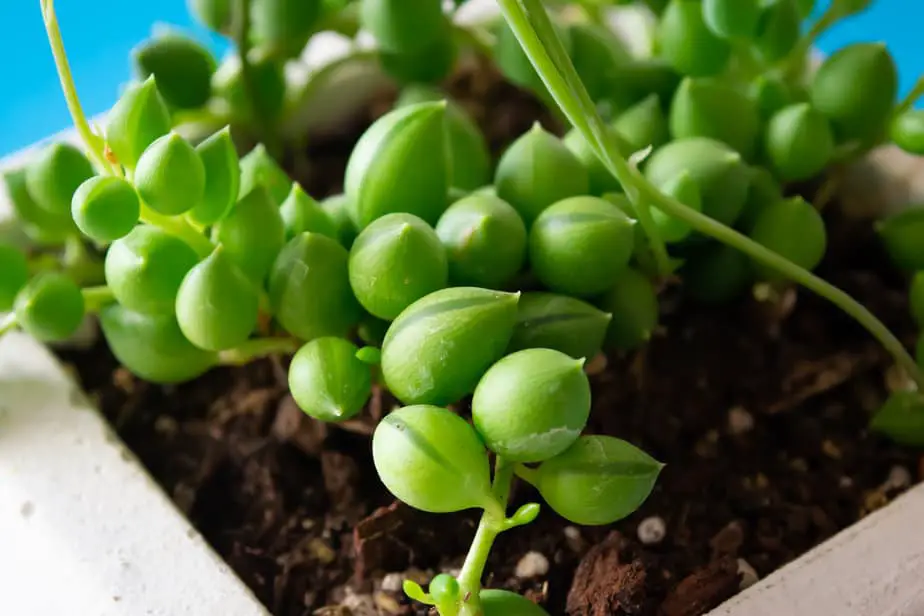
This cascading plant is native to southwest Africa. It doesn’t grow tall but tends to spread on the floor like a mat. That’s why they’re a great option for tanks that have a lot of floor space.
But it’s important to note that these plants tend to do best at low temperatures. So they will just stay on the cool side of your tank.
And since they may need even cooler temperatures to bloom, they may never bloom for the period that they’re in your tank.
If they do bloom, they produce small white flowers. On the other hand, the leaves of these plants look like small green pearls.
11. Sweetheart Wax Plants (Hoya Kerrii)
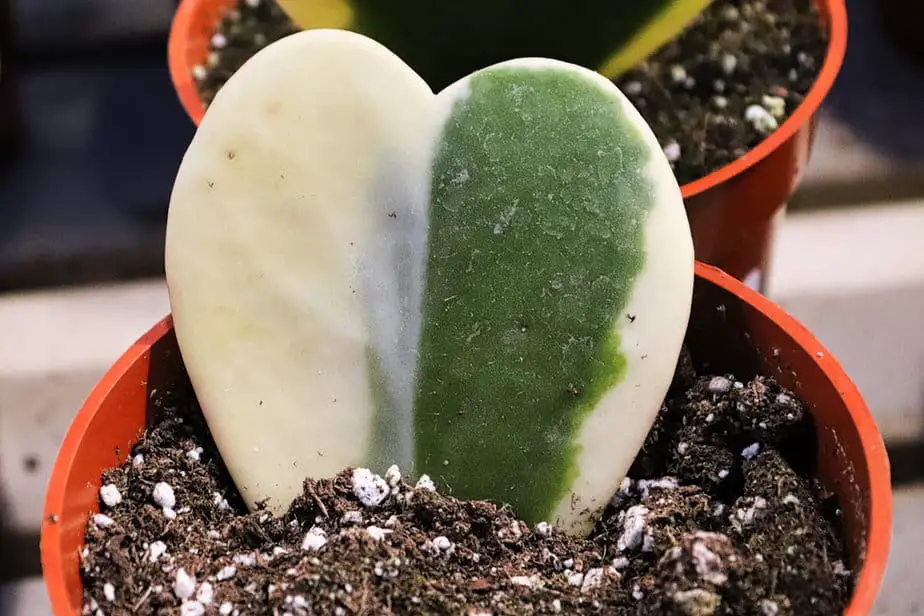
As its name suggests, this succulent has heart-shaped leaves. When it first starts growing, this plant will usually have a single heart-shaped leaf that stands five inches tall.
However, the plant will develop more of these leaves as it grows. These leaves are usually bright green. These contrast well with the white flowers that these plants produce.
The sweetheart hoya is a low-maintenance plant that does well in warm temperatures. You should be fine if you water it once or twice a month. Keep in mind that overwatering will lead to root rot and even death.
Why Choose Live Plants for Your Geckos Enclosure
Aesthetic Appeal
Live plants provide a beautiful and visually appealing touch to your leopard gecko’s enclosure. They can make the habitat more interesting for your gecko.
Natural Environment
By including live plants in your leopard gecko’s enclosure, you’re mimicking their natural environment, which can help them feel more at ease.
Leopard geckos are shy creatures, accustomed to hiding and retreating from their surroundings. Plants create additional spots where your gecko can rest or hide, offering a sense of security and privacy.
Live plants help maintain the humidity levels needed in a leopard gecko tank. They help regulate air moisture, making the environment healthier and more comfortable for your pet.
Air Quality
Another benefit of using live plants in a leopard gecko terrarium is improved air quality. Plants naturally purify the air by absorbing carbon dioxide and releasing oxygen. This process results in a cleaner and healthier environment.
Incorporating live plants into a bioactive tank can enhance the natural balance of your pet’s habitat. A bioactive setup includes plants, beneficial insects, and microorganisms that work together to break down waste, improve air quality, and create a sustainable environment.
When setting up a plant-based environment, ensure the plants are compatible with leopard geckos’ preferred temperature (75-85°F) and humidity (30-40%). Ensure 12-14 hours of light exposure per day for both the plants and your gecko.
Be aware that certain plants may not thrive in the same conditions as your gecko, so always choose suitable ones for their enclosure.
Remember, creating a natural, comfortable, and visually appealing environment for your leopard gecko contributes to its overall well-being and happiness.
Types of Safe and Non-Toxic Plants
Succulents
Succulents are an excellent choice for your leopard gecko terrarium as they are non-toxic, easy to maintain, and create a natural environment for your pet. Some popular succulent options include:
- Echeveria: These are attractive, rosette-shaped plants that come in various colors and sizes. They thrive in well-drained soil and bright, indirect light.
- Jade Plant: Also known as the lucky plant, the jade plant is a sturdy and low-maintenance succulent. They prefer well-drained soil and bright, indirect light.
- Sunset Aloe: This is a small, colorful aloe vera plant perfect for leopard gecko enclosures. It requires well-drained soil and bright, indirect light.
Air Plants
Air plants like Tillandsia are another excellent option. They don’t require soil, making them easy to incorporate into your terrarium. Air plants need:
- Adequate air circulation
- Regular misting with water
- Bright, indirect light
Caring for Live Plants
As a leopard gecko owner, you want to provide your pet the safest and most comfortable environment. Choosing and caring for live plants can enhance your gecko’s terrarium significantly. This section will provide tips and guidelines on caring for live plants in your leopard gecko’s habitat.
Watering
Watering your live plants is crucial to their survival and well-being in the terrarium. However, each plant has its requirements when it comes to moisture. Use a water spray bottle to mist the plants gently, usually a couple of times a week, depending on their specific needs. Be sure to research each plant to determine its optimal watering routine.
Lighting
Leopard geckos are nocturnal creatures, and because of this, their lighting requirements may differ from those of the plants in their environment. While some plants can thrive with minimal natural light, others may require more sunlight or artificial lighting. Research each plant’s lighting requirements, and if necessary, implement a balance between providing an ideal environment for your geckos and caring for the plants.
Temperature and Humidity
Leopard geckos usually require temperature gradients between 75°F to 90°F in their enclosure. Keep in mind that some plants may not be able to withstand these temperatures, especially when combined with the humidity levels that leopard geckos need. To cater to both the plants’ and your gecko’s wellbeing, select plants that are comfortable with the temperatures and humidity levels within your terrarium.
Soil
It’s essential to choose a well-drained soil that is suitable for both your plants and your leopard gecko. The proper substrate will help the plants thrive while ensuring comfort for your pet. Do some research on the specific plants you have and pick a soil that works well with those species. This way, you’ll create a healthy, happy environment for your leopard gecko and your live plants.
Live Plants vs Artificial Plants
Live plants offer several advantages for your leopard gecko. They can provide a source of hydration, environmental enrichment, and potential nutritional benefits. Live plants also freshen the air through photosynthesis, which can improve the overall atmosphere of your terrarium.
However, keep in mind that some live plants require specific care – like the mother-in-law’s tongue, a popular choice for leopard gecko terrariums. Consider the ease of care and the temperature requirements for the plants you select.
On the other hand, fake plants come with their own set of benefits. They are easy to maintain, as they don’t require any watering or sunlight. This is especially important if your terrarium has limited natural light. Additionally, artificial plants don’t outgrow their space, so you don’t need to worry about replacing them as often.
Here’s a comparison of live and artificial plants:
| Factors | Live Plants | Artificial Plants |
|---|---|---|
| Maintenance | Require watering, sunlight, and care | No watering or sunlight needed |
| Size Stability | Can outgrow their space | Remain the same size |
| Air Quality | Improve air through photosynthesis | No impact on air quality |
| Environmental Benefits | Provide hydration and enrichment | None |
